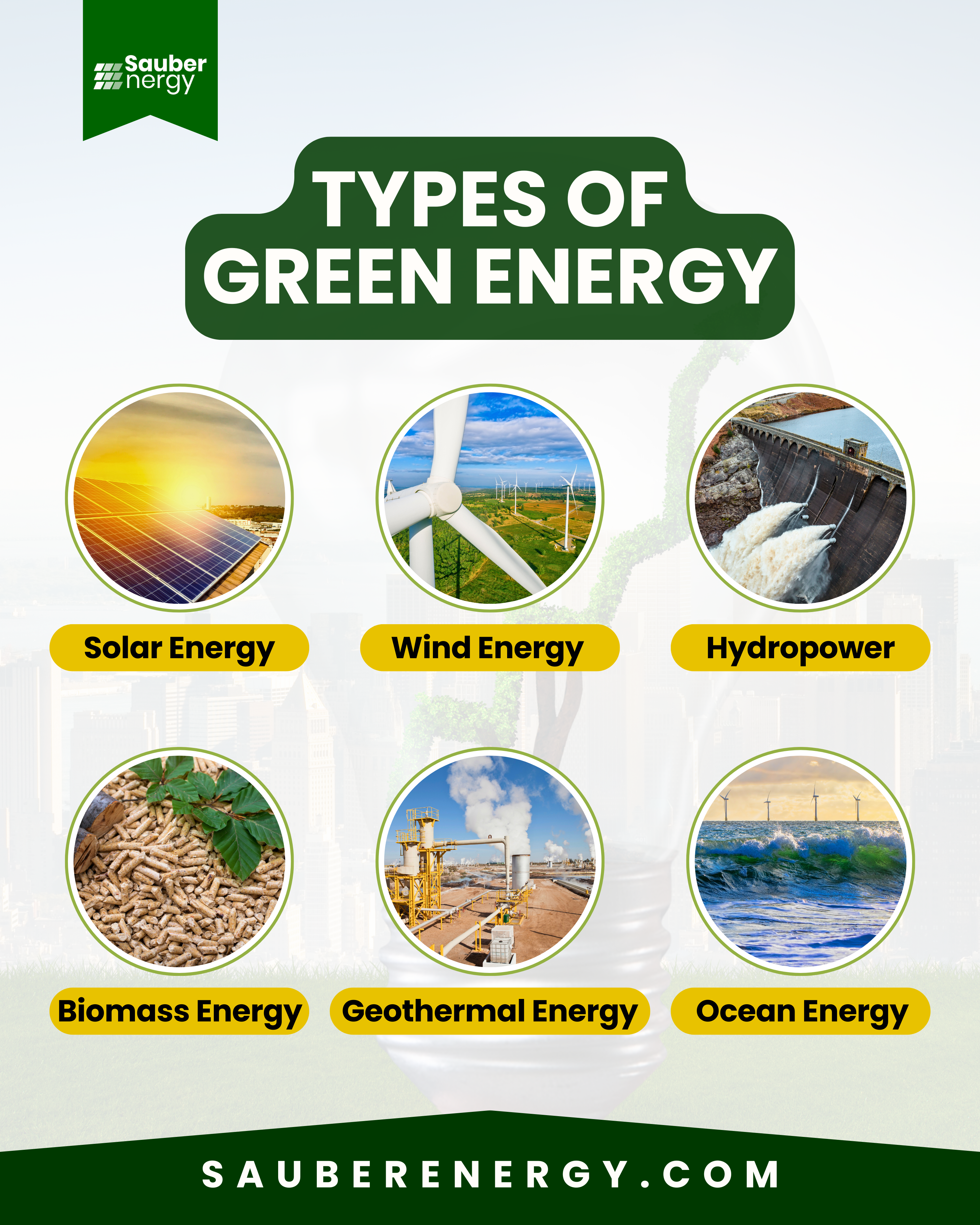As the global community embraces sustainable energy solutions, green energy has emerged as a critical focus in the dialogue surrounding environmental conservation and energy security. Green energy refers to power generated from natural resources that replenish naturally and quickly. Among these, solar energy is particularly notable for its accessibility and wide-ranging applications. In this blog post, we’ll examine the different types of green energy available today and highlight what makes solar power distinct.
Types of Green Energy
1. Solar Energy
Solar energy captures sunlight to produce electricity or heat through photovoltaic (PV) panels or solar thermal systems. This adaptable energy source can power everything from residential homes to large-scale industries.
2. Wind Energy
Wind energy converts the kinetic energy of wind into electricity using wind turbines. These can be found both on land and offshore, with large installations generating substantial amounts of power. Wind energy is one of the most rapidly expanding renewable resources.
3. Hydropower
Hydropower relies on the energy from flowing or falling water, often generated at dams or along rivers. While it provides a reliable source of energy, it can significantly impact local ecosystems and fish populations.
4. Biomass Energy
Biomass energy derives from organic materials, such as plant and animal waste. Through burning or conversion to biofuels, biomass can generate heat and electricity. However, its use can compete with agricultural land and food production.
5. Geothermal Energy
Geothermal energy taps into the heat stored beneath the Earth’s surface. It is highly efficient and provides consistent power, but its availability is limited to specific geographical areas, making it less flexible than other energy sources.
6. Ocean Energy
Ocean energy harnesses tidal and wave movements to generate power. Although still in the early stages of development, it has significant potential due to the vastness of oceanic resources. However, the technology isn’t as advanced or widespread as other forms of green energy.

Distinctive Features of Solar Energy
While all forms of green energy aim to minimize environmental impact, solar energy offers several unique advantages:
1. Widespread Accessibility
Solar energy can be harnessed almost anywhere there is sunlight. This allows for decentralized energy production, enabling individuals and communities to generate their own power and reduce dependence on centralized energy grids.
2. Scalability
Solar power systems can be small, like rooftop panels, or large, such as solar farms, making them easy to scale according to needs. Homeowners can begin with a modest setup and expand as necessary, while larger installations can significantly impact regional energy supply.
3. Minimal Environmental Footprint
In terms of operational impact, solar energy is one of the most environmentally friendly options. Solar panels produce electricity without emissions, and advancements in recycling technologies are addressing concerns about the end-of-life management of panels.
4. Economic Opportunities
Investing in solar energy often results in job creation in areas like manufacturing, installation, and ongoing maintenance. Additionally, solar power can lead to lower energy bills for both individuals and businesses, offering long-term economic benefits.
5. Innovation and Progress
Solar technology is advancing rapidly, with improvements in efficiency, energy storage, and integration into existing power grids. Innovations like solar shingles and transparent panels are expanding the possibilities for solar energy use.
In conclusion, all forms of green energy, including wind, hydropower, biomass, and geothermal, play essential roles in fostering a sustainable future. However, solar energy stands out due to its accessibility, scalability, and minimal environmental impact. As we continue to innovate and prioritize renewable energy technologies, solar power will likely remain a key player in the pursuit of a cleaner and more sustainable energy future.
If you’re thinking about transitioning to solar energy, now is a great time to explore your options. Not only will you be contributing to a healthier planet, but you’ll also enjoy numerous financial and environmental benefits that solar energy can provide. At Sauber Energy, we are here to ensure that your switch to solar is as seamless as possible; plus, our flexible financing option makes it even easier to afford. Contact us today – +1 (613) 800-9933 – to kickstart your journey into more savings.




